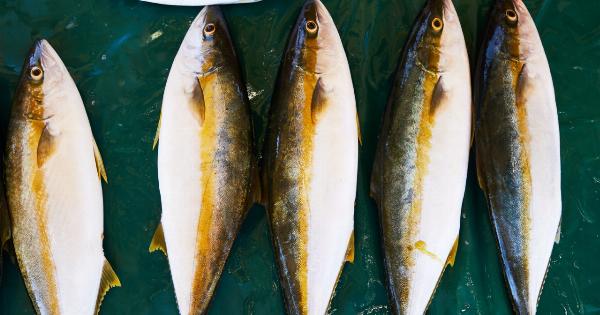Seafood is a delicacy that is enjoyed worldwide. Whether you prefer shrimp, lobster, crab, or fish, cleaning your seafood is an important step for a safe and delicious meal.
Cleaning seafood can be intimidating for those who aren’t familiar with it, but with a few simple steps, you can clean your seafood like a pro.
Step 1: Preparation
Before you start cleaning your seafood, you’ll need to gather some supplies. Here’s what you’ll need:.
- Seafood
- Large bowl or container
- Water
- Salt
- Lemon or lime
- Cutting board
- Sharp knife or scissors
- Disposable gloves (optional)
Step 2: Cleaning the Seafood
Cleaning seafood is a straightforward process that varies slightly depending on the type of seafood you are preparing. Here are some general guidelines:.
Cleaning Shrimp
To clean shrimp:.
- Hold the shrimp by its tail and pull the shell off.
- Remove the legs and devein the shrimp.
- Rinse the shrimp under cold running water.
- Soak the shrimp in salted water for 10 minutes to remove any sand or debris.
- Rinse the shrimp again under cold running water.
- Add lemon or lime juice to remove any remaining odors.
Cleaning Lobster and Crab
To clean lobster and crab:.
- Fill a large pot with water and bring to a boil.
- Place the lobster or crab into the boiling water and cook until their shells turn bright red.
- Remove the lobster or crab from the pot and place them under cold running water to cool.
- Using a pair of scissors or a knife, cut the shell down the middle of the back and remove the meat.
- Rinse the meat under cold running water to remove any leftover debris.
Cleaning Fish
To clean fish:.
- Using a sharp knife, scale the fish and remove the fins.
- Gut the fish by removing the entrails from the belly cavity.
- Rinse the fish under cold running water.
- Make a few diagonal slits on each side of the fish to help it cook evenly.
- Add lemon or lime juice to remove any remaining odors.
Step 3: Storage
After cleaning your seafood, it’s important to store it correctly to prevent spoilage. Here are some tips:.
- Store seafood in airtight containers or wrapped in plastic to prevent moisture loss.
- Keep seafood in the fridge at a temperature below 40°F.
- Keep seafood away from other foods to prevent cross-contamination.
- Use seafood within two days of purchase.
Step 4: Safety Tips
Seafood can be a source of foodborne illness if not handled and cooked properly. Here are some safety tips:.
- Wash your hands and any utensils before and after handling seafood.
- Cook seafood to an internal temperature of at least 145°F.
- Avoid eating raw or undercooked seafood.
- Discard any seafood that smells or looks suspicious.
- Don’t eat seafood that has been left out at room temperature for more than two hours.
Conclusion
Cleaning seafood might seem daunting, but it’s a simple process that can be mastered with a little practice. By following these easy steps, you can prepare and enjoy your favorite seafood dishes with confidence and safety.



























